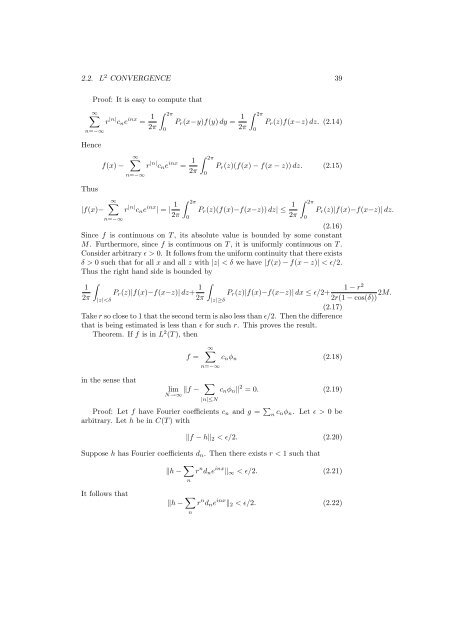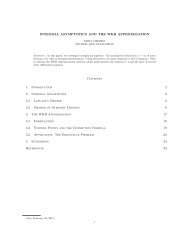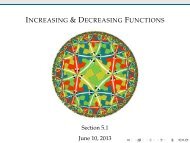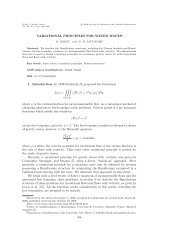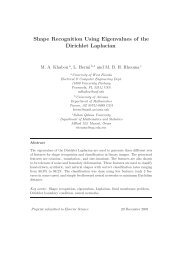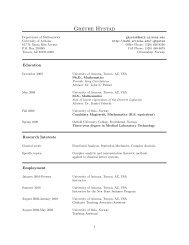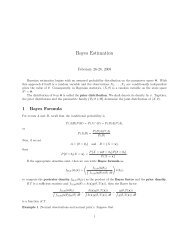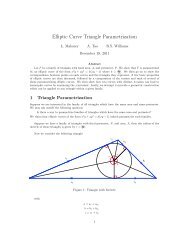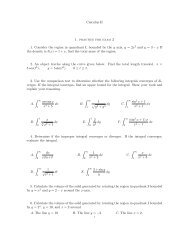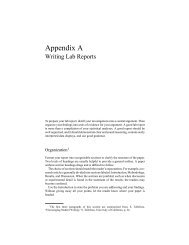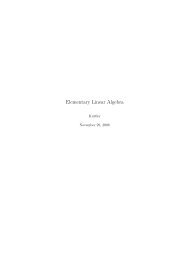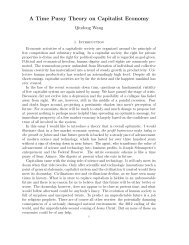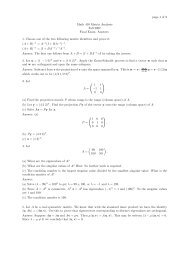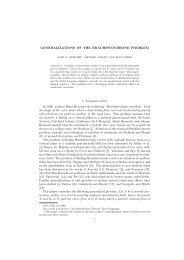Methods of Applied Mathematics Lecture Notes
Methods of Applied Mathematics Lecture Notes
Methods of Applied Mathematics Lecture Notes
Create successful ePaper yourself
Turn your PDF publications into a flip-book with our unique Google optimized e-Paper software.
2.2. L 2 CONVERGENCE 39Pro<strong>of</strong>: It is easy to compute that∞∑n=−∞HenceThus|f(x)−r |n| c n e inx = 12πf(x) −∞∑n=−∞∞∑n=−∞∫ 2π0r |n| c n e inx = 12πr |n| c n e inx | = | 12πP r (x−y)f(y) dy = 12π∫ 2π0∫ 2π0∫ 2π0P r (z)f(x−z) dz. (2.14)P r (z)(f(x) − f(x − z)) dz. (2.15)P r (z)(f(x)−f(x−z)) dz| ≤ 12π∫ 2π(2.16)Since f is continuous on T , its absolute value is bounded by some constantM. Furthermore, since f is continuous on T , it is uniformly continuous on T .Consider arbitrary ɛ > 0. It follows from the uniform continuity that there existsδ > 0 such that for all x and all z with |z| < δ we have |f(x) − f(x − z)| < ɛ/2.Thus the right hand side is bounded by12π∫|z| 0 bearbitrary. Let h be in C(T ) with‖f − h‖ 2 < ɛ/2. (2.20)Suppose h has Fourier coefficients d n . Then there exists r < 1 such that0P r (z)|f(x)−f(x−z)| dz.1 − r 22r(1 − cos(δ)) 2M.(2.17)‖h − ∑ nr n d n e inx ‖ ∞ < ɛ/2. (2.21)It follows that‖h − ∑ nr n d n e inx ‖ 2 < ɛ/2. (2.22)


